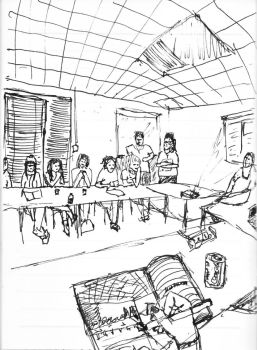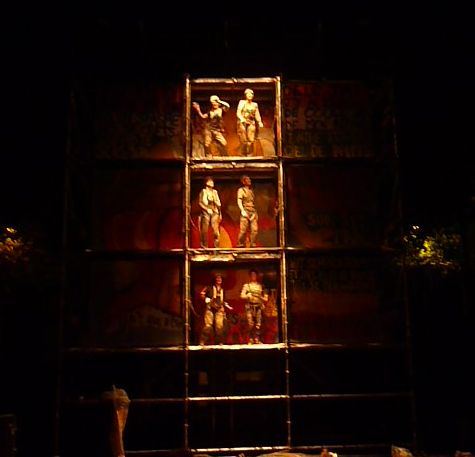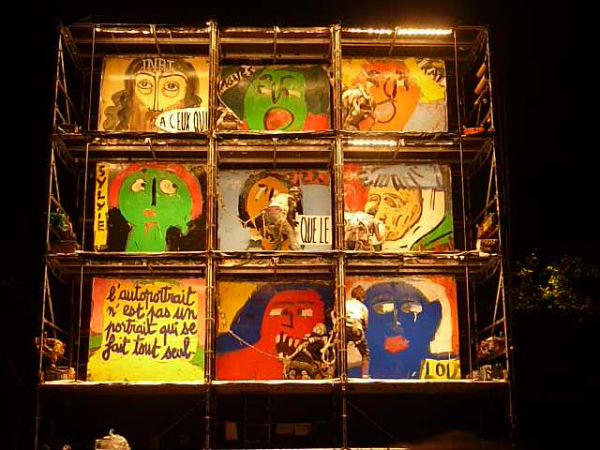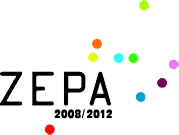In the afternoon of the 7th of October we met with a few members of Luc Amoros to discuss with them their work and how it has developed. The company was originally called ’Amoros et Augustin’, who were the two founding members of the company. Their work mainly consisted of simple puppet shows, use of shadow manipulation and theatre. From there they started to include other mediia, including the use of paint, cinema, animation, multimedia, text, people/plastic shapes to create shadows and music. Luc Amoros is famous for his use of a large screen that the artists would perform behind using silouettes and other multimedia techniques. This created an illusion of 1930’s style film, with black and white imagery and theatre based on historical and cultural happenings.

- Drawing by Kira Palmer
There was originally a technique where a fixed light would be shone against a screen to create silouhettes but Luc invented the technique of moving the light throughout the performance to make the shadows seem more alive. From then on Luc Amoros decided that he would not lose the magic of illusion by the performers being visible to the audience, but enhance it. The company believe that even when there isn’t a physical screen, Amoros makes sure that there is a clear barrier between the performers and the audience, which is always broken at the end of the show. When there is a physical screen it is a huge structure of scafolding and plastic which is generally about 10 metres tall and wide. Amoros is not site specific, his work can be indoors and outdoors. However it has become known within the more recent years to be a street show. The company believe that the outdoors is sometimes warmer. We believe that this means that when it is outdoors and free, any type of person can watch. There is a sense of community and unity within the place they chose to perform. Something that came from moving a lot of his work to outdoor space was the use of 360 degree shows. This meant that the audience could see every aspect of the show from different sides, chosing what they wish to see and meaning everyones experience is different. Therefore in a performance called ’360degrees’, on display would be a projection of the film, the performers and the screen with silohettes. Amoros has worked many times at Le Forneau. Luc Amoros originally started with singers, dancers and actors who he progressively taught to paint. Now he uses painters or artists who he teaches to perform (including song and dance). We found this to be inspiring as we have never seen work like this before.
Page Blanche was incredible as it included most of the techniques we have previously mentioned. The artists in the show were originally painters who have been trained to sing, dance and perform. To us this was quite astonishing as we know how hard it can be for an artist to become equally good at multiple skills when they have been trained in a different art form. Us artists can become set in our ways. It was a very high energy performance throughout that required the performers to paint, sing and dance at the same time, as well as using spoken word in parts throughout.

The show gathered a massive audience as it was in the centre of Brest and was free to watch. This is also amazing for us to see as usually English festivals or shows are expensive to attend. The company and artists have been a huge inspiration to us, encouraging us to think more outside of the box and to try and create work that is just as eye opening.



We would personally like to thank Le Fourneau and the Zepa partners for making these experiences possible, we will take so many valuable things away with us.
Created by Jessica Anstiss, Ashleigh Greenslade and Kira Palmer




